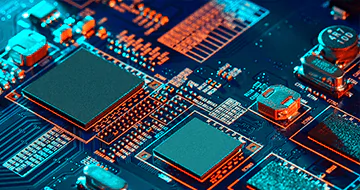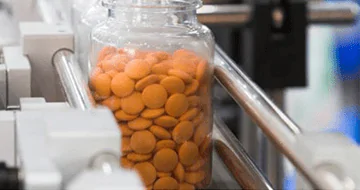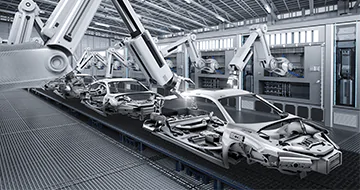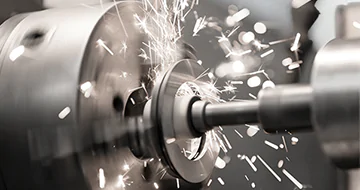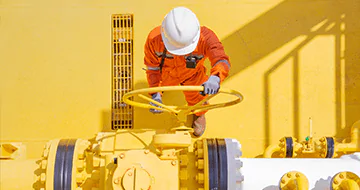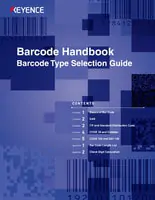KOD39 VE KODBAR
Dünyada 100’e yakın barkod mevcuttur. Aşağıda ITF barkodlarının temellerini öğrenmek adına kısa bir giriş yer almaktadır.
KOD39
KOD 39, 1975 yılında Intermec Corporation tarafından geliştirilen bir tür barkoddur. Sayılar dahil en fazla 43 karaktere kadar, harfler ve bazı semboller barkodun içine dahil edilebilir. Harfler işlenebildiğinden, KOD 39 (CODE39) endüstriyel alanlarda vazgeçilmezdir ve otomotiv, elektronik gibi sektörlerde kullanılmaktadır. Bu, ABD’de AIAG (Automotive Industry Action Group-Otomotiv Endüstrisi Eylem Grubu) tarafından standartlaştırılmıştır.
KOD 39 Bileşimi/Kompozisyonu
CODE 39 (KOD 39), 9 çubuktan 3’ü ve boşlukların geniş olduğu çubuklar ve boşluklar modeli için adlandırılmıştır. Temel bileşim aşağıdaki gibidir
• Tek bir harf (karakter) 9 çubuk ve boşlukla gösterilir.
• Yıldız işaret (*) barkodun başına ve sonuna eklenir. (Başla/Dur karakteri)
• Karakterler arasındaki boşluklara “karakterler arası boşluk” denir. Genellikle, geniş boşluk dar çubuk (bar) genişliği kadar geniştir. (Maksimum genişlik, dar çubuk genişliğinden 3 ila 5,3 kat daha geniş belirlenmişti.)
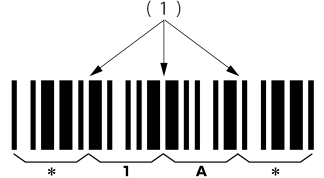
(1)
Karakterler arası boşluk
KOD 39 Karakter Bileşimi
Aşağıdaki tablo KOD 39’un (CODE39) karakter bileşimini gösterir.
KOD 39, sayılar (0’dan 9’a), alfabeler ve simgeler (-, ., _ (boşluk), *, $,/, +, %) dahil olmak üzere karakterleri temsil edebilir.

KOD 39 Özellikleri
KOD 39 (CODE39) sadece sayıları değil harfleri ve sembolleri de temsil ettiğinden, ürün numarasını da göstermeye olanak tanır.
Başla/Dur karakteri yıldız işaretidir (*).
9 çubuk (bar) ve boşluk tek bir karakteri temsil etmek için kullanılır. Diğer kodların sağladığından daha fazla çubuk (bar) ve boşluk, barkodun en yüksek boyutu kadar tam okuma ve yüksek güvenilirlik sağlar.
Veri harf kullanımı talep ettiğinde KOD 39 (CODE 39) idealdir
KOD 39 Uygulamaları
KOD 39 (CODE 39) ana olarak endüstriyel uygulamalarda kullanılır.
AIAG (Automotive Industry Action Group-Otomotiv Endüstrisi Eylem Grubu) etiketi, ABD’de otomotiv parça fişlerini kontrol etmek için kendi endüstrisi tarafından standartlaştırılmış bir barkod etiketidir. Etiket, otomotiv parçalarının kaplarına hatasız olarak eklenir. Her bir parçanın etiketi, etiketin okunmasıyla onaylanır.

KODABAR
KODABAR, 1972’de Monarch Markalama Sistemi tarafından geliştirilen bir barkoddur. Bu barkod, “2/5” ten sonra erken aşamada tanıtılan barkoddur. Kan bankası yönetimi, kapıdan kapıya teslimat servisi fişleri ve üye kartları gibi seri numarası talep eden uygulamalarda yaygın olarak kullanılmaktadır.
KODABAR (CODABAR) Bileşimi
KODABAR, her dar ve geniş genişliğin tek bir karakteri (harfi) temsil ettiği 4 çubuktan (bars) ve 7 boşluktan oluşur (toplamda 7 öğe).
• KODABAR bileşiminin temelleri aşağıda açıklanmıştır:
• Tek bir karakter 7 çubuk ve boşluk tarafından temsil edilir.
• A, B, C ya da D’den (a, b, c ya da d) herhangi biri barkodun başına ve sonuna eklenir. (Başla/dur karakteri)
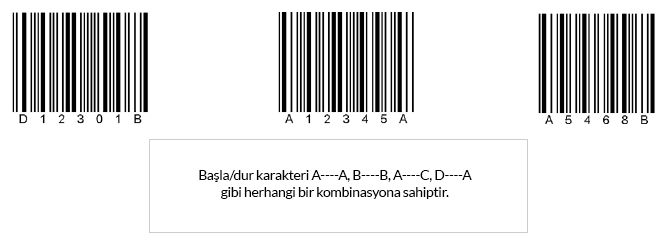
KODABAR (CODABAR) Karakter Bileşimi/Kompozisyonu
Süpermarketler gibi perakendeciler mümkün olduğunca geniş zemin alanı tutmak amacıyla envanteri azaltmayı amaçlar. Bu talebi karşılamak adına, üreticiler ve satıcılar talep edilen ürünü, istenilen zamanda ve istenilen miktarda, hatasız bir şekilde teslim etmek zorundadır. Bu uygulama, “tam zamanında sistem” olarak adlandırılır ve aşağıdaki durumun gerçekleşmesine sağlar.
KODABAR, sayılar (0’dan 9’a), harfler (A, B, C, D) ve simgeler (-,$, /, ., +) dahil olmak üzere karakterleri temsil edebilir.

KODABAR Özellikleri
ITF’e kıyasla KODABAR’da okuma atlama olasılığı daha düşüktür. KOD 39’la karşılaştırırsak barkod boyutu daha küçük olabilir. Ancak, okuma atlama olasılığının KODABAR’Da düşük olması asla olmayacağı anlamına gelmez. Eğer baskı kalitesi iyi değilse, okuma atlaması aşağıda gösterildiği gibi meydana gelebilir.

Eğer tek bir boşluk olması gerekenden daha geniş basılırsa, karakter “dur karakteri” olarak düşünülür ve okuma atlamasına sebep olur

Herhangi bir başlatma/durdurma karakter kombinasyonunun bulunması, çok yönlü kullanıma olanak tanır. Örneğin, A—-A fiyat listesi için, A—-C indirimli özel fiyat için, C—-C ise pazarlıklı satış fiyatı için kullanılır.
KODABAR Uygulamaları
Kan Bankası
KODABAR, bireysel kimlik doğrulaması için kan testi (numune) test tüpünde de kullanılır.

